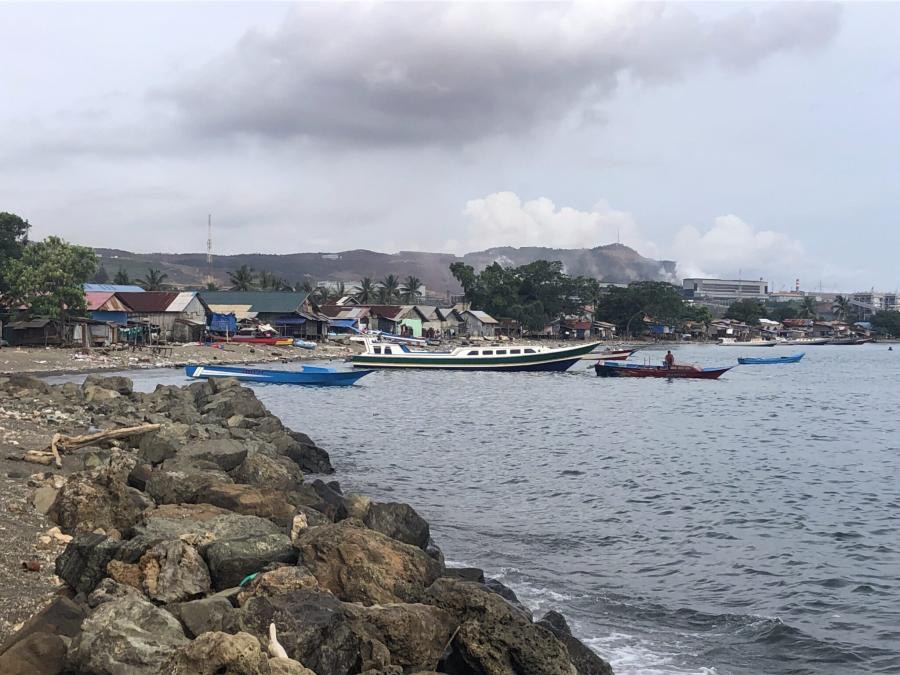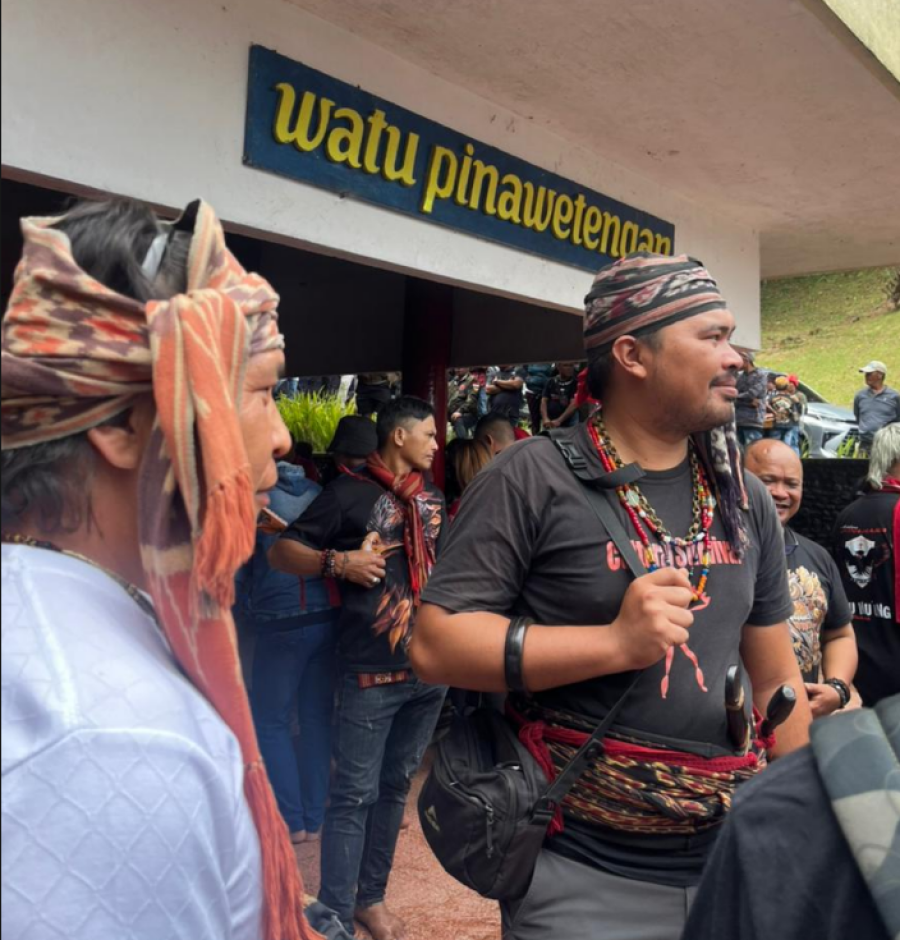How many of the Toraja in the South Sulawesi highlands of Indonesia have migrated to other islands in the archipelago or to cities in Sulawesi is not known; but the impact of migration has been significant for this group of 320,000. Toraja now speak of the past in terms of before and after migration (merantau).
What has happened to cause this migration?
Throughout the Dutch colonial era (1906-42), the highland economy of South Sulawesi was based on wet rice, cultivated in terraced fiords on mountain slopes. Rice, the staple, was supplemented by garden crops (cassava, maize), while water buffalo, pigs, and chickens were raised for ceremonial sacrifice and consumption. Society was divided into nobles, commoners, and slaves, distinctions based on heredity and on power over land and persons. In spite of the presence of a Dutch Reformed Mission most highlanders remained committed to their ancestral gods, spirits, and hierarchical rituals.
In 1942, the Japanese Occupation shattered Dutch power in South Sulawesi. Following the Japanese defeat, Indonesians waged a revolution against the returning Dutch. Independence, achieved in December, 1949, marked the beginning of fifteen tumultuous years in South Sulawesi. An Islamic guerrilla movement swept the countryside and terrorized "animist" populations on the borders of the Toraja highlands. Pigs were killed, sties destroyed, houses razed, and thousands of people fled to the major Toraja towns. During this period massive conversions to Christianity occurred, and thousands of young Toraja attended village schools for the first time, learning the Indonesian language and some technical skills. Yet there were few outlets for new skills or knowledge in the villages, and roads to the "outside" world were closed as a result of civil war.
In 1965, while most of Indonesia was in turmoil from an abortive coup in Jakarta and post-coup massacres of suspected communists, peace was restored in South Sulawesi. Several years later, in marked contrast to the policies of President Sukarno, President Suharto invited foreign investors to Indonesia.
Multinationals quickly moved into Kalimantan (Borneo) to tap its wealth of tropical forests. These corporations needed laborers, and the underemployed, educated, and highly motivated young Toraja wanted jobs. They rejected subsistence agriculture at home for at least two reasons: it could not support their physical needs; it lacked the enticements of a "modern" life with cash, cities, watches, radios, blue jeans, and Elvis Presley tapes. For former slaves or persons at the bottom of the status hierarchy, migration also offered a chance to acquire previously undreamed of wealth and prestige.
The impact of out-migration on subsistence agriculture has not been analyzed. Ironically, older villagers bemoan the lack of labor to work their fields. Although it does not appear that fields are left untended or terrace walls in disrepair, people voice the fear that this will happen. In a small sample of households in one area, less than 30% of 150 people between the ages of 15 and 35 remained in their village. Of those who remained, some anticipated leaving when they finished high school; some had previously been to Kalimantan and had plans to return: and several others were employed at a Japanese coffee factory, the only such industry in Toraja. Only 8% of this age group remained as active agricultural laborers.
Other consequences of migration are more visible. Young people often speak with disdain of the "old-fashioned" ways of their parents or the village, but in practice their ties remain close. Migrants usually send money to their families at home, which is used to build large houses or granaries, traditional status symbols. Even more of the new economic bounty is channeled into traditional ritual performances. Traditional status categories are often obscured as a result, for everyone, whether former slaves or high nobles, has access to the wealth obtainable abroad. However appealing the lifestyle and values of that world, traditional Toraja status competition has not been rejected. Ritual, the prime means of social competition in the highlands, flourishes.
As ritual absorbs the great new influx of wealth, the development of productive resources in the highlands (coffee, truck farming, crafts) is left untended. Toraja dependence on migration (and the foreign investment that supports it) is thus perpetuated. Yet eventually the vast irreplaceable forests of Kalimantan and Irian Java will be decimated, and the multinationals will pull out. What will the migrants do?
Income remittances by migrants reinforce a multiple religious and cultural identity. While most migrants are Christian, they typically return to the highlands to sponsor funerals for parents or grandparents who adhere to traditional "animist" practices. Compounding whatever confusion or conflicts this might engender, ritual since 1970 has also attracted European tourists, who would rather see a pagan than a Protestant funeral.
Tourism is seen by some as a possible solution to the area's economic woes. But so far it has not provided a sufficient economic impetus for more than a few young people to remain at home, working in hotels or shops or as tour guides. The result is that most older people are faced with a new scenario, in which their children and grandchildren, who once made their houses and villages so full of life, continue to leave, while tourists, for reasons of their own, arrive in increasing numbers. At special times, namely for funerals, the children return. Rituals become high points of social life and intense activity; but the times in between are unusually empty.
In the old days, a man said to me, the fields swarmed with people in the weeding season: "It was not lonely then."
Article copyright Cultural Survival, Inc.



